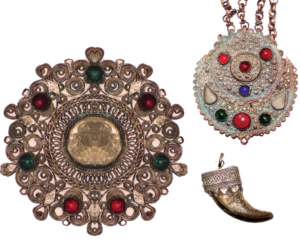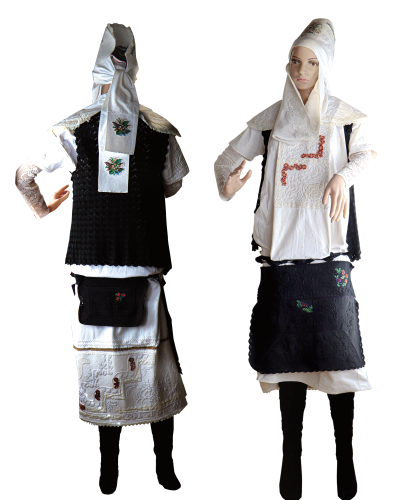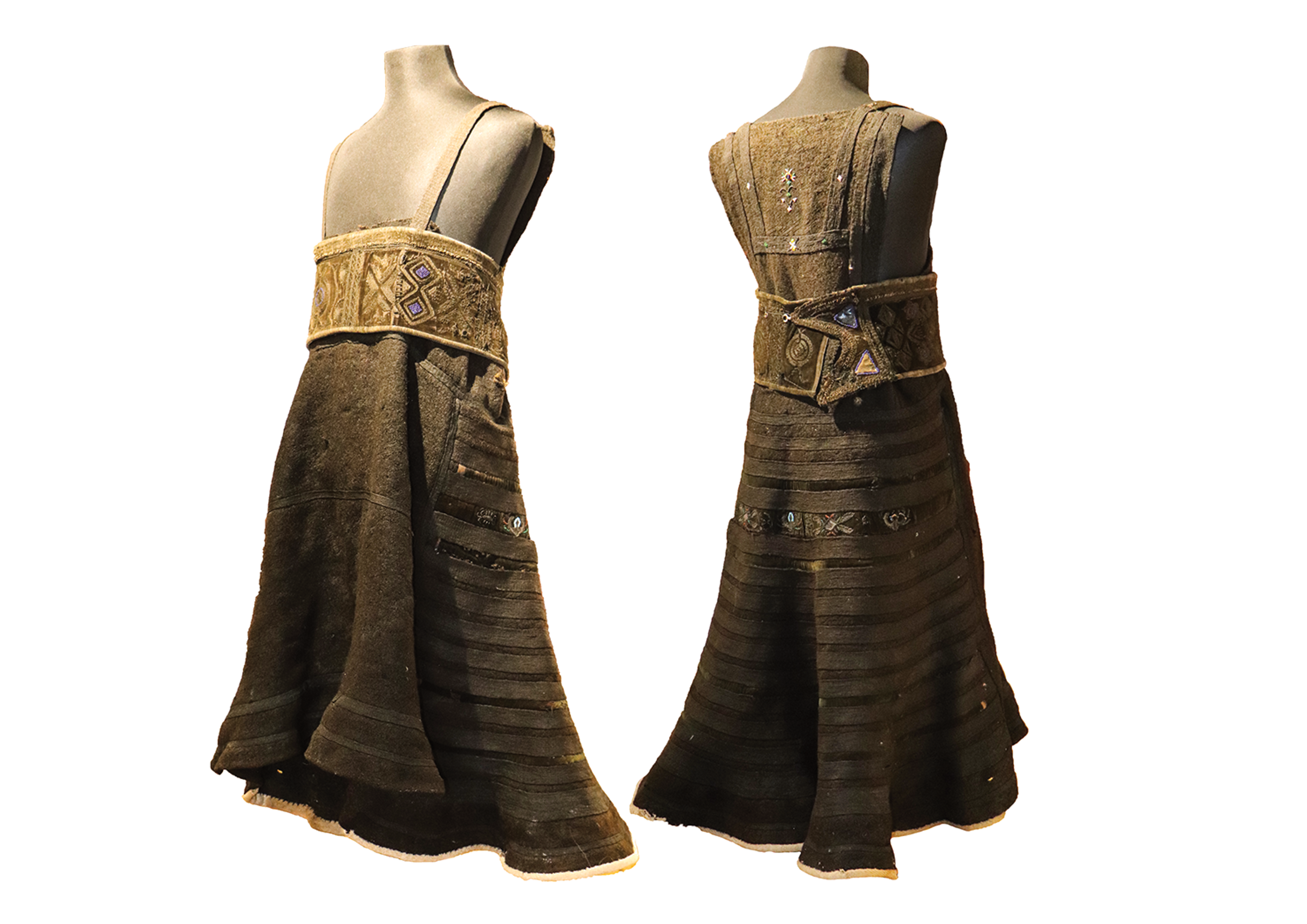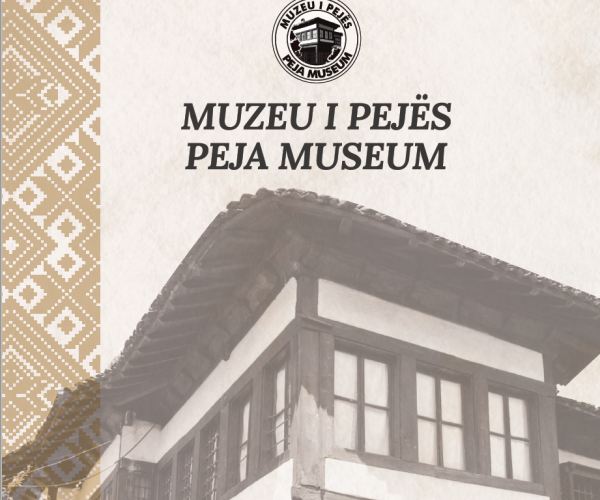PEJA MUSEUM
OPEN TO VISITORS: 08:30- 15:30
For the period from May – October,
the museum can be visited during the weekends with hours: 10:00 – 14:00.
Tel: +383 39 431 976 | Email: besa.berisha@rks-gov.net
Address: Sheshi Haxhi Zeka.
About the Museum
Located in Haxhi Zeka Square at a hectic point which connects the centre of Peja with the Old Bazaar is the old Konak of Tahir Bey, an old traditional house of Peja built-in century XVIII, which has also served as a “guest house” (guesthouse) for passers-by and occasional traders from other countries, who had frequented the city of Peja for commercial purposes. Within the spaces of this house which consists of the ground floor and the first floor, there are two exhibitions (ethnological and archaeological) with about 2000 exhibits, which introduce Peja’s history in different periods from the Illyrian to the present day. This museum’s even more incredible value is shown in the dynamics of activities. Almost throughout the year, its staff organizes various activities with different generations of citizens, which aim at preserving cultural heritage, its presentation, educating new generations and promoting the heritage of Peja at national and international levels. This museum is at the service of all citizens of different ages and nationalities.
History of the Peja Museum
The Museum of Peja is a cultural institution that deals with preserving and presenting cultural heritage and operates within the municipality of Peja. It was established in 1971 and named “Museum of Revolution” and has served to explain the historical material on the National Liberation War (LNÇ) during the Second World War that took place in the territory of the Municipality of Peja. In 1977 the “Ethnological Museum” was established to promote the material and spiritual heritage of the Peja Region. Although it was launched earlier, its activity started in 1983 on the premises of the Community of Culture (now the House of Culture). It will then be located in the “Guest House of Tahir Beg” in 1989, where it still operates. In 1992, these two museums were merged, working in the same building, Tahir Beg’s guest house, as the “Peja Regional Museum-Ethnology Sector”, in which activities were also conducted in archaeology and history. For this museum to develop even more in other sectors, the Municipal Assembly in 2015 approved the new Statute of the Museum. The name was changed from “Regional Museum of Peja-Ethnology Sector” to “Museum of Peja”. The Museum of Peja owns a fund of about 2000 museum objects, namely ethnological exhibits, archaeological artefacts and historical documents, collected during many years of fieldwork but also thanks to donations from citizens and the Museum of Kosovo. Many of these museum objects are presented in two permanent exhibitions, the ethnological and the archaeological. They offer the rich and diverse cultural material and spiritual heritage of the Dukagjini Plain. This heritage has developed during different periods and under the influence of different cultures, which cultures are intertwined, which is seen in all areas and aspects of life such as clothing, architecture, development of social, cultural, and economic vitality, etc.
Ethnographic Exhibition
The permanent ethnological exhibition, ‘Ethnological Cultural Heritage of the Dukagjini Plain ‘, was opened in 1989. It presents the material and spiritual heritage of the Dukagjini Plain, through various collections such as: traditional clothing of the area (clothing of the Dukagjini Plain and Dukagin Plain and Rugova), textiles, bedding, jewelry, weapons, utensils, crates and other household furniture, work tools, musical instruments, etc. All these exhibits are handicrafts of local craftsmen made, mainly by men, with different materials and simple tools, as well as works of women who, with a rare craftsmanship and a very creative and artistic sense, have created. Hand-woven works of art such as: carpets, various rugs, pieces of traditional clothing, then crochet, needle, etc. These works belong to century XVIII, XIX and XX.
Clothing of Dukagjini Plain
Clothing of the Dukagjini Plain dress consists of a long white shirt woven at the waist and decorated with embroidery on the chest and collar, a black or brown vest or sweater, front coil, rear coil, knitted sleeves crocheted, on the head is the tie and handkerchief, black socks and rubber shoes. Depending on the age, the dress of Dukagjinthe Plain, known as the ‘village dress’ or ‘Podgur’, is divided into girls, brides and old women, which is less or not at all decorated with embroidery.
Clothing of Rugova Brides
Rugova Brides’ clothing is characterized by various colours and motives, made of fabric and decorated with embroidery with thread, silk and colourful beads. It consists of a long shirt up to the knees with short sleeves; then the dress, which has the shape of a very wide bottom (composed of 120 kinda pieces), which also resembles the dress; cleats or panties; 4 colourful handkerchiefs tied at the front which symbolize fertility, prosperity, happiness and prosperity in life; rear spool; the black vest, called the ‘arm’; belts; red head scarf; crocheted sleeves (from the wrist to the elbow), black socks and robber shoes, while the chest is adorned with silver ornaments. The clothing of Rugova young brides is also characterized by the decoration of the bride with herds and talismans, made of crochet or colourful beads but also silver, which is placed to protect the ‘new’ (bride) from the ‘evil eye’ or as it is popularly known the ‘be-witched’. Older women’s clothing is less embroidered and decorated, dominated by white and black instead of colourful scarves and the front scarf is put on, while the white headscarf is worn on the head. Even the young girl’s dress is distinguished by the twist, which is a woollen end, worked with twists and decorated with a cord embroidered with wire.
Clothing of Rugova Men
The clothing of Rugova men is made of wool and consists of woollen trousers, a white shirt made of fabric embroidered with long sleeves, and friends with colourful stripes, where the kombucha (short rifle), woollen socks and rubber shoes are placed. On the head, there is a wrinkle and a white silk scarf with a length of 3m and a width of 60cm, which is wrapped twice around the head and twice around the neck, which also serves as a cover or wrapper for the person in case of death (shroud).
Xhubleta
Xhubleta is a typical women’s clothing in Northern Albania, Malësia e Madhe, Rugova, Dukagjini and the Albanian territories in Montenegro. It is made of a wavy bell-shaped end, particularly at the back. It consists of a large number (13-17) of felt belts, placed horizontally and intertwined with many masterpieces with thin woollen braids, while it is hung on the shoulder with two wide straps, also the felt. Other parts of the jubilee are joka (Carolina), krdokla, paranik (trapezoidal apron, also wavy at the bottom), butt (similar to paranik, but smaller), socks, canes and soles. Centuries ago, the jubilee was made in more colours, but the colours that have survived today are black for women and black and white for girls. Xhubleta, with its shape, structure and decorative system, is the evident heritage of Illyrian culture. Depending on age, social status or even the importance of the occasion, the jubilee is decorated with various motifs. The most common symbols that appear in it are: Moon, the Sun, a broken cross (swastika), then symbols that represent connections with belief in God, the love and beauty of the mountain woman, fish, stars, various insects, as the inspiration of the environment where they lived, the bull’s head, the cult of the snake and the scorpion, and above all the most visible emblem is the eagle. A solemn robe, with all the accessories/ornaments, weighs about 14-15kg.




Archaeological Exposition
The archaeological exhibition “Cultural Archaeological Heritage of Peja Region” was opened in 2014 on the occasion of marking ‘International Museum Day’ and presents the archaeological heritage of the Peja Region. The artefacts presented in this exhibition are findings of archaeological excavations carried out during the years 1979-1999, supported by the Provincial Institute for the Protection of Monuments of Kosovo and the Republican Institute of Belgrade, in several localities, such as: in the ancient city of Peja-Gradina, Lubozhdë of Istog, Banja of Peja, Vrellë, Istog, Nakëll, etc. Many of these artefacts are also random finds of citizens, mainly on their properties, as with the voting altar, found recently by chance in the village of Gramaqel. These archaeological findings testify to the ancient history of Peja, which archaeological sources show was the second most crucial locality in the territory of Kosovo, at the level of “Municipum” (city), after Ulpiana. Peja, as a city, is mentioned for the first time in the work “Gheographia” of Ptolemy (87-150) with the name ‘Siparantum’, while Procopius (565), the Byzantine historian, describes the locality with the term ‘Pentza’, which later takes the form ‘Pek-Pekia-Peja’. In antiquity, Peja was known as ‘Gradina’, the ruins of which still exist today near the former Factory of Industrial Batteries. Artefacts such as stela, cypress and votive altars discovered in this locality are exhibited in the Museum of Peja. The collection of archaeological relics of the Museum of Peja also includes stone tools, bronze coins, ceramic pieces, oil lamps, etc., which belong to different periods, starting from the prehistoric period, Illyrian-Dardanian, Byzantine, Slavic and Ottoman. STELA AND CYPUS The stela presented in the Museum of Peja is a tombstone broken in two, found in the ruins of the ancient city of Peja-Gradina, near the former Factory of Industrial Batteries in 1978. According to archaeologists, the stela is the stone of a family cemetery, where are carved three portraits, a man in the middle and two women on the side, which was erected by Valens Sita for himself, his wife, Dede Iuncte and daughter Ania Dasi. It is decorated on the side with the motif of two shoots of a grapevine and heartburn leaves, which emerge and grow from the amphora at the bottom of the stela, next to which there is also a fallen vessel. It is made of white marble, measuring 195 x 65 x 25cm, and consists of a pediment, niches and inscription fields. In terms of shape and decoration, it is a typical Dardanian stele of the 15th century. II-III of e.s. The campus is also a tombstone with a specific shape of the headstones of the Illyrian cemetery in the form of a prism or a cylinder, an inscription or decoration which belongs to the same century. II-III of AD. cipusi është gur mbivarror me një formë specifike të gurëve mbivarror të varrezave ilire në formë prizme apo cilindri, me mbishkrim apo dekorim i cili i takon, poashtu shek. II-III të e.s.


Museum publication

Peja Museum
This catalogue aims to inform the general public as best as possible about the work and activities of the Museum of Peja in the research on the field, collection, preservation, presentation and promotion of the material and spiritual Cultural Heritage of the Peja Region. Readers, many times, have had the opportunity to be informed about the Museum of Peja as a tourist point, along with other attractive attributes of the cultural-historical importance of Peja, in numerous Tourist Information and Leaflets published by the Directorate for Economic DevelopmentTourism sector. This Catalog will be presented to the Museum of Peja as a Cultural Institution and the “Tahir Bey’s Inn” as a cultural monument.
